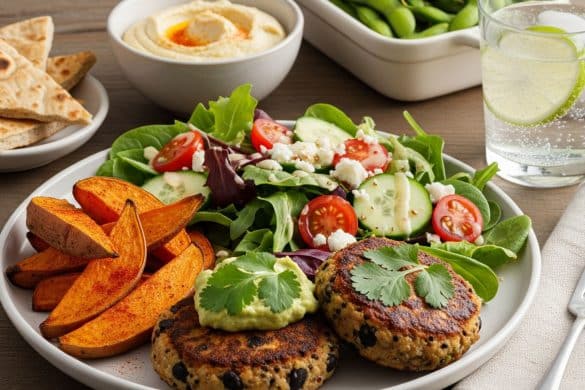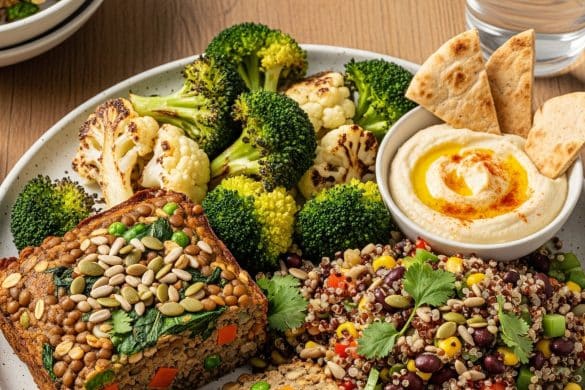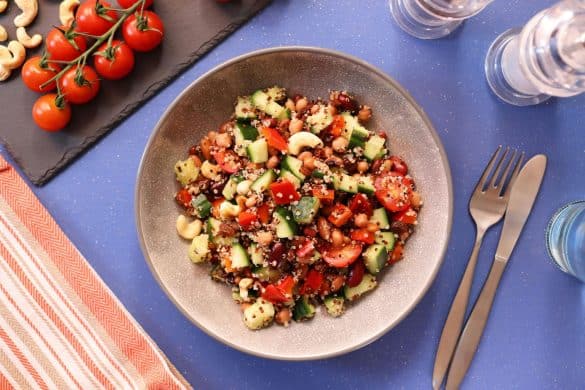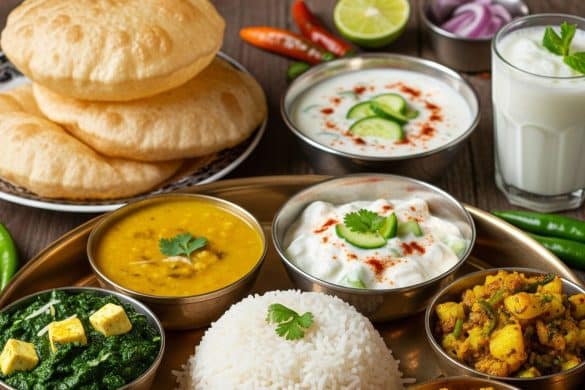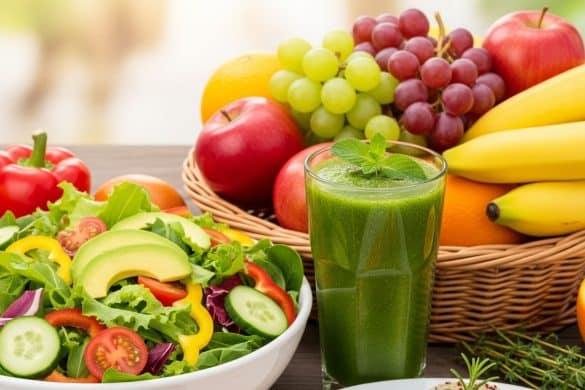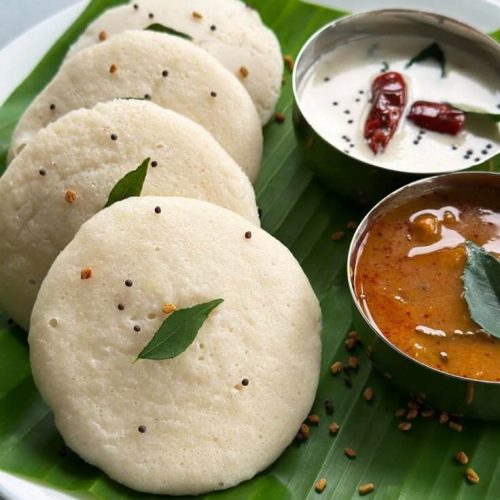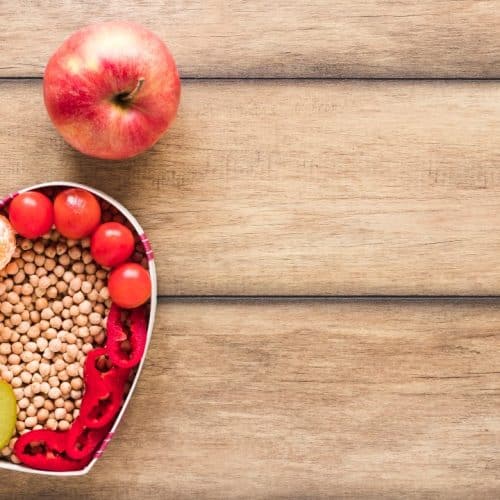Sri Lankan cuisine is a delightful blend of vibrant flavours, shaped by the island’s rich history and diverse cultures. The food is a perfect mix of aromatic spices, coconut milk, seafood, and tropical fruits, creating dishes that are full of zest. Some popular dishes include Ambul Thiyal, a tangy fish curry made with goraka, and Kukul Mas Curry, a flavorful chicken curry with mustard seeds and curry leaves. These are often paired with Pol Roti (coconut flatbread) or Pol Sambol (coconut relish), making for a hearty and satisfying meal.
In this blog, we will introduce you to some of the most beloved Sri Lankan dishes, giving you a taste of the island’s unique culinary offerings. Get ready to explore the rich, aromatic flavours that Sri Lanka has to offer!
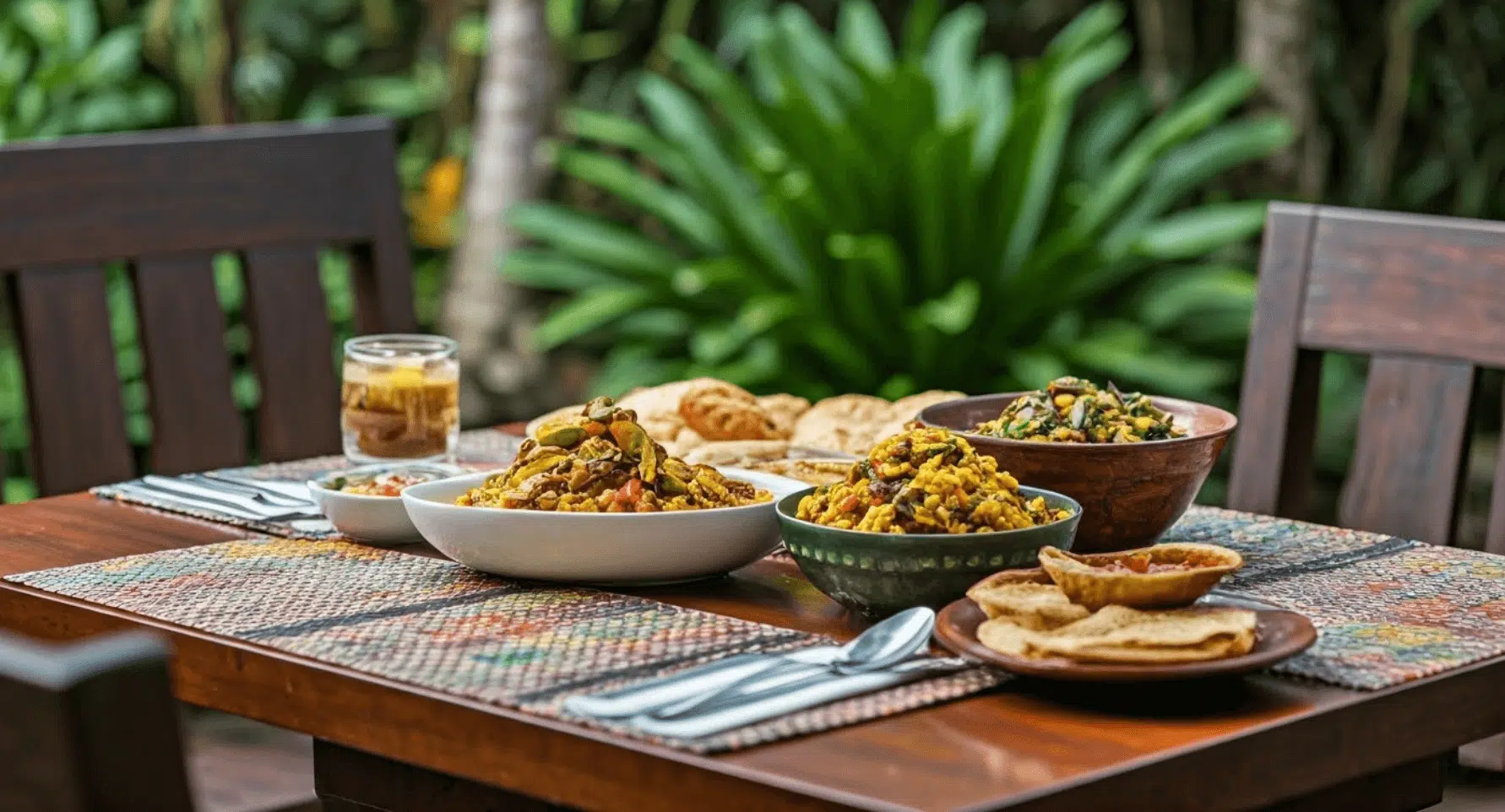
Traditional Sri Lankan cuisine spread
Top 10 Must-Try Sri Lankan Cuisine
With its distinctive flavours, Sri Lankan food, represents the essence of island life—vibrant, hearty, and full of life. The history of Sri Lankan cuisine can be traced back to centuries of diverse cultural influences, from the ancient kingdoms to colonial powers, all of which have left their mark on the Sri Lankan cuisine history. Below are the top 10 Sri Lankan cuisine dishes that you must try to have a complete taste of this beautiful country.
Gotu Kola Mallum Sambola
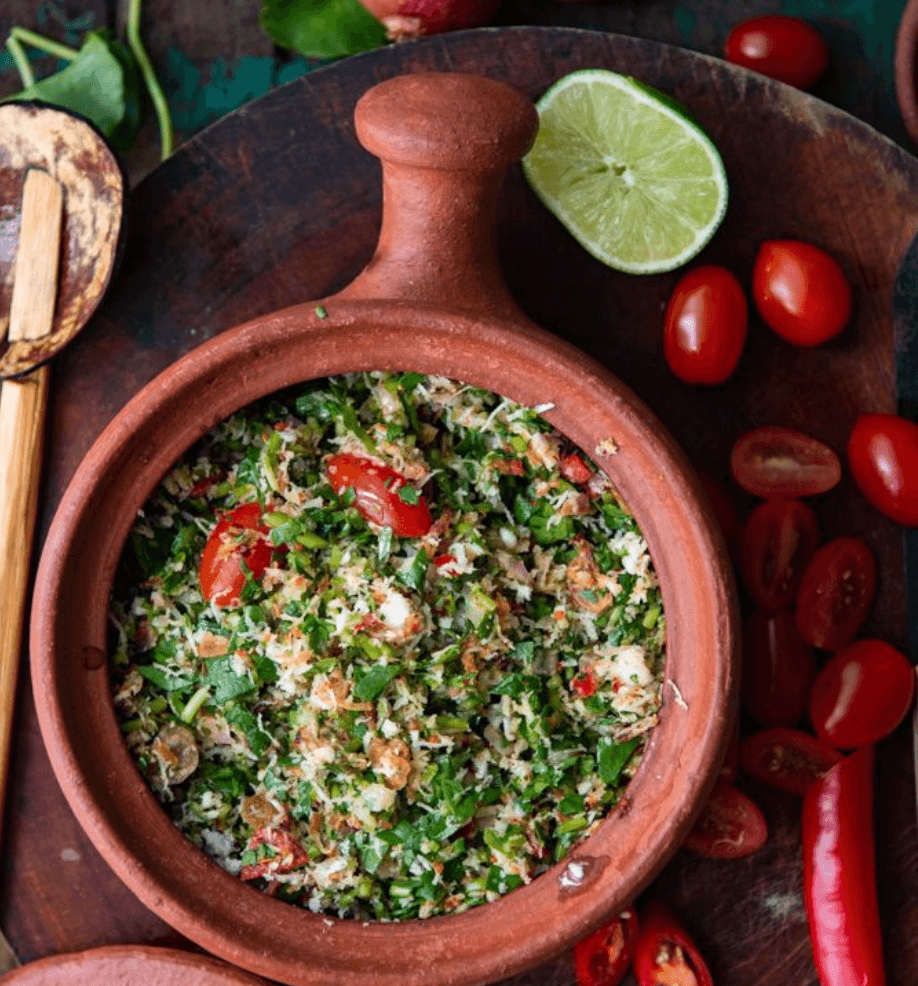
Gotu Kola Mallum Sambola
Gotu Kola Mallum Sambola is a refreshing dish made from finely chopped Gotu Kola leaves (a type of pennywort), grated coconut, onions, green chillies, and lime juice. This traditional side dish reflects the simplicity and freshness of Sri Lankan cuisine. It pairs wonderfully with rice, curry, and even egg hoppers, a popular breakfast item. The dish is not only nutritious but also showcases the deep connection of Sri Lankan cuisine with local, fresh ingredients. The history of Sri Lankan cuisine is deeply rooted in its use of indigenous plants and herbs like Gotu Kola, making this dish a must-try.
Parippu (Dhal Curry)
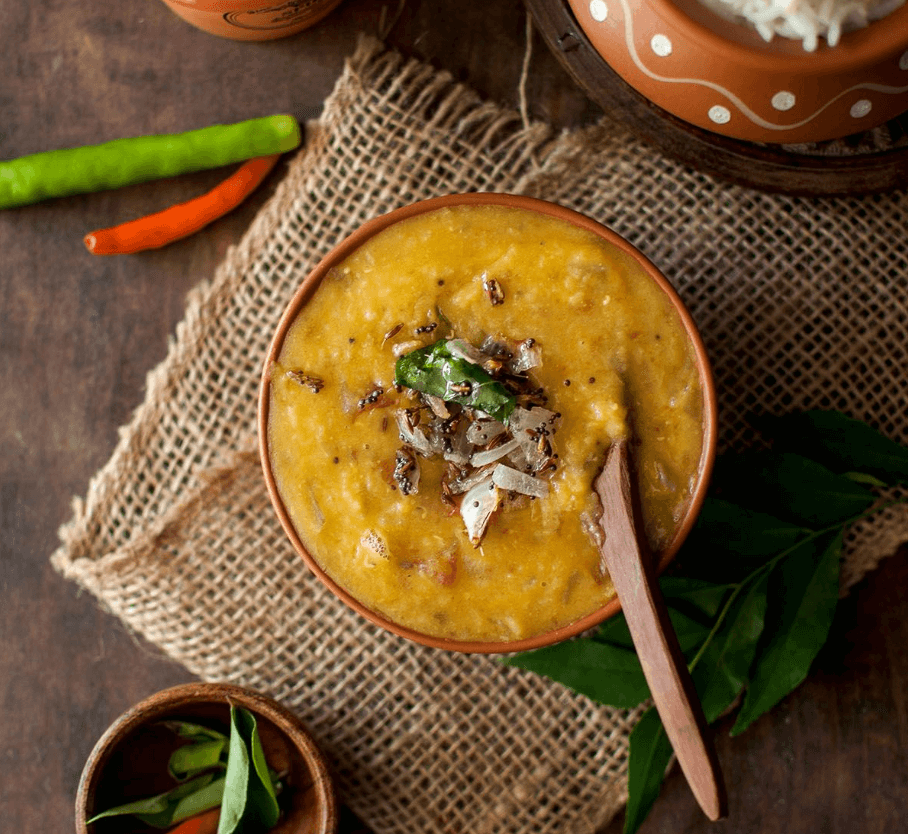
Parippu (Dhal Curry)
Parippu, or Sri Lankan dhal curry, is made from red lentils cooked in coconut milk and flavoured with spices like turmeric, mustard seeds, and curry leaves. It’s a staple in every Sri Lankan home, providing comfort with its creamy texture and rich, aromatic taste. This dish represents the heart of Sri Lankan cuisine and is often enjoyed with rice, roti, or string hoppers. You can add a side of chili sauce to spice things up. The evolution of Sri Lankan cuisine dishes like Parippu reflects a perfect blend of local traditions and colonial influences, especially the use of coconut milk.
Polos (Green Jackfruit Curry)
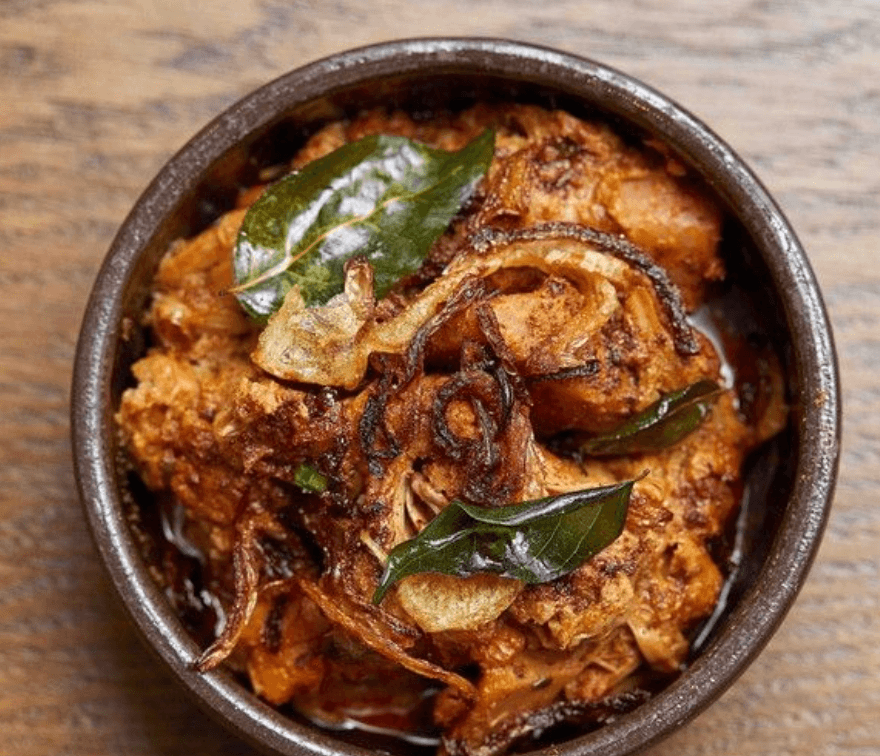
Polos (Green Jackfruit Curry)
Polos is a vegetarian curry made from unripe jackfruit simmered in a rich mixture of coconut milk and spices. This dish is a great example of how Sri Lankan cuisine uses its local produce to create hearty meals. The jackfruit, with its meaty texture, absorbs the flavours of the spices, making it an incredibly satisfying meal. It’s often served with rice or roti and can be enjoyed with a refreshing glass of coconut water. Sri Lankan cuisine dishes like Polos highlight the importance of using seasonal and local ingredients, which have been a cornerstone of Sri Lankan cooking for generations.
Wambatu Moju (Eggplant Pickle)
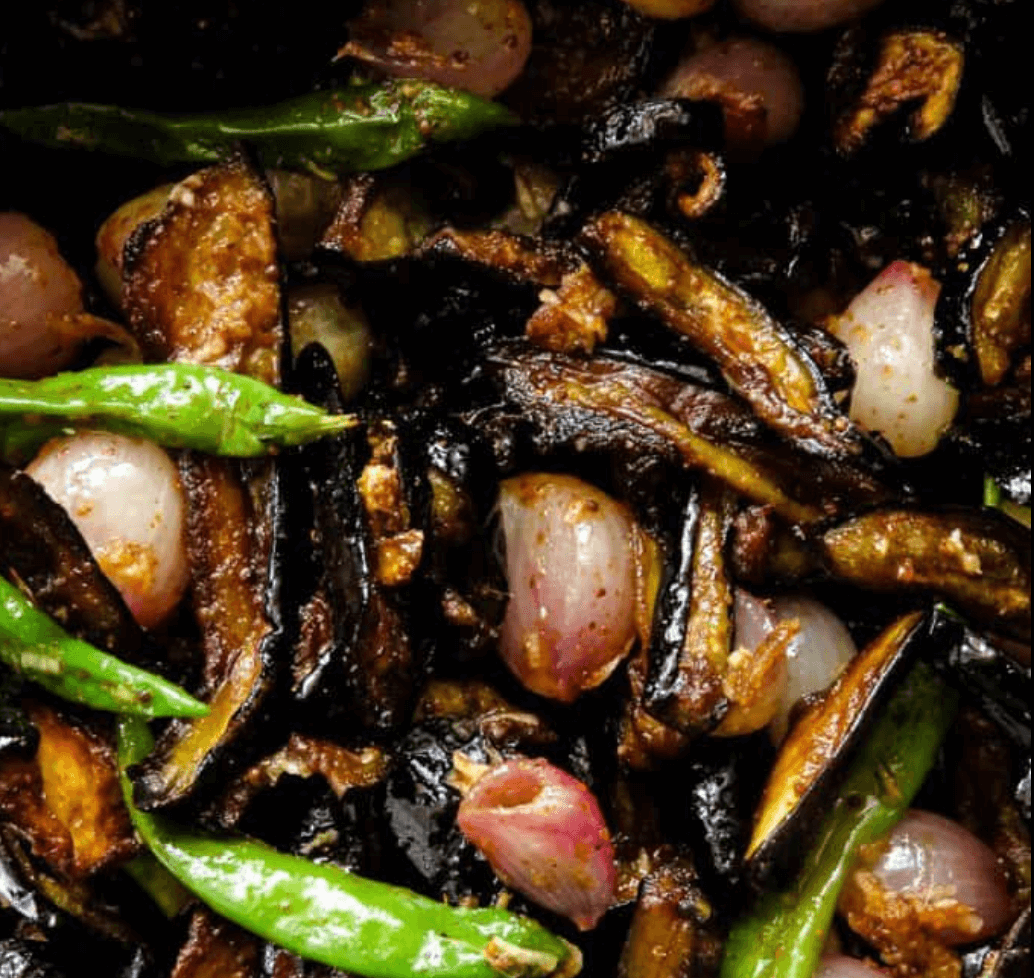
Wambatu Moju (Eggplant Pickle)
Wambatu Moju is a tangy and sweet eggplant pickle made by frying eggplant slices and then marinating them in a spicy mixture of vinegar, mustard seeds, sugar, and chili powder. This dish is a common side dish in Sri Lanka, offering a burst of flavour that balances out the richness of curries. Wambatu Moju’s bold, sweet-and-sour taste pairs perfectly with rice and curry or even with milk rice (Kiri Bath). This dish showcases how Sri Lankan cuisine history has evolved with the use of vinegar, sugar, and spices brought in during the colonial era.
Pol Sambol (Coconut Relish)
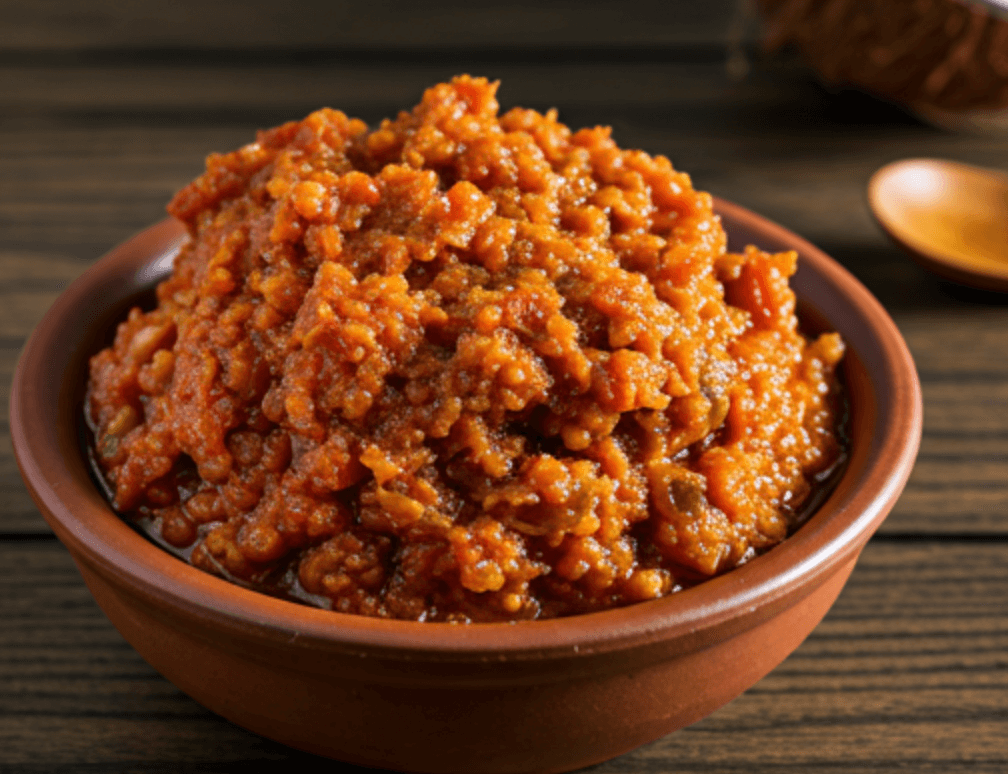
Pol Sambol Coconut Relish
Pol Sambol is a coconut relish made from grated coconut, red onions, chili powder, lime juice, and Maldive fish (or dried fish). It’s a spicy, tangy side dish that is often served with rice or string hoppers. Pol Sambol encapsulates the essence of Sri Lankan cuisine, with its fresh ingredients and bold flavours. This dish highlights the island’s long-standing use of coconut, which is central to both sweet and savoury dishes in Sri Lankan cuisine. It’s often served alongside egg hoppers, making for a simple but flavourful breakfast.
Fish Ambul Thiyal (Sour Fish Curry)
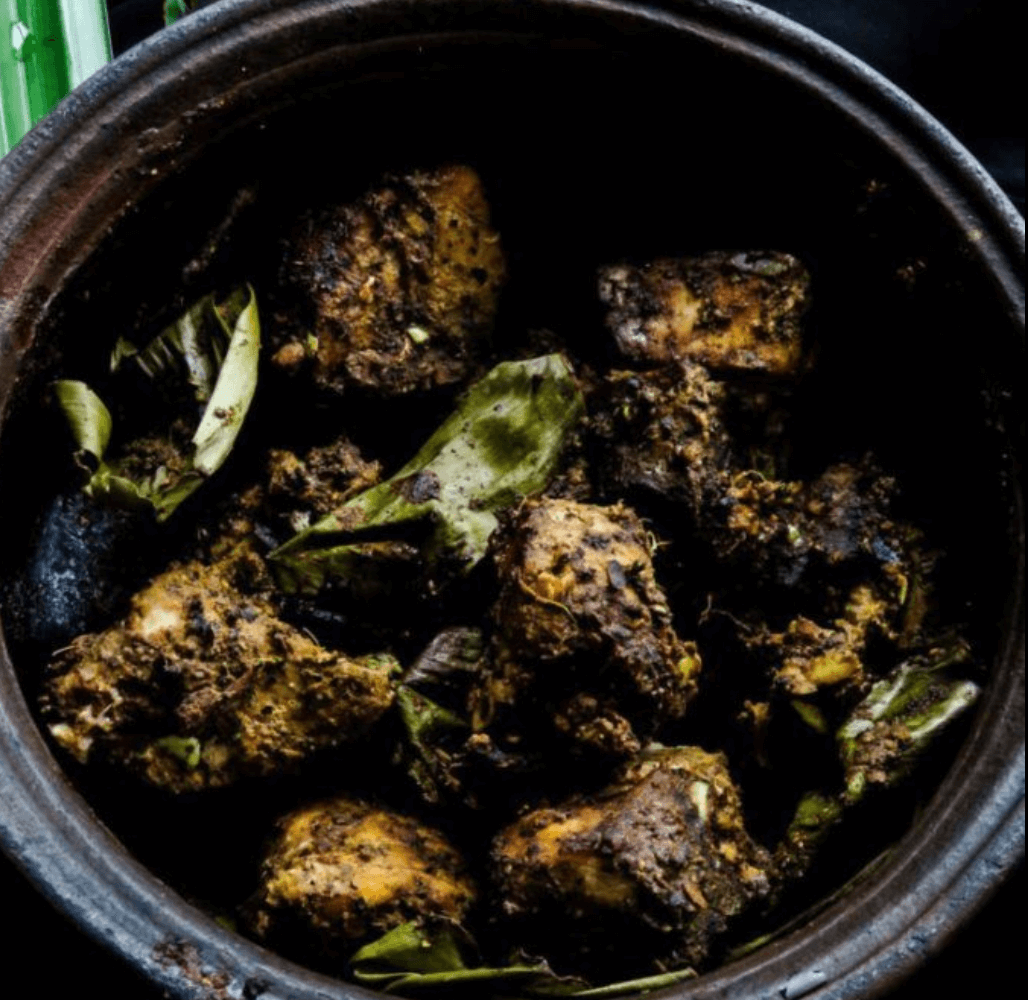
Fish Ambul Thiyal Sour Fish Curry
Fish Ambul Thiyal is a signature sri lankan dish known for its unique sourness, derived from goraka, a local sour fruit. The fish is simmered with roasted spices, black pepper, cinnamon, and pandan leaves, along with coconut milk for added richness. This dish balances tanginess and spiciness beautifully, and it’s commonly served with rice or roti. The history of Sri Lankan cuisine is reflected in the careful use of locally sourced spices and fruits like goraka, which are used to create such distinct flavours.
Kukul Mas Curry (Chicken Curry)
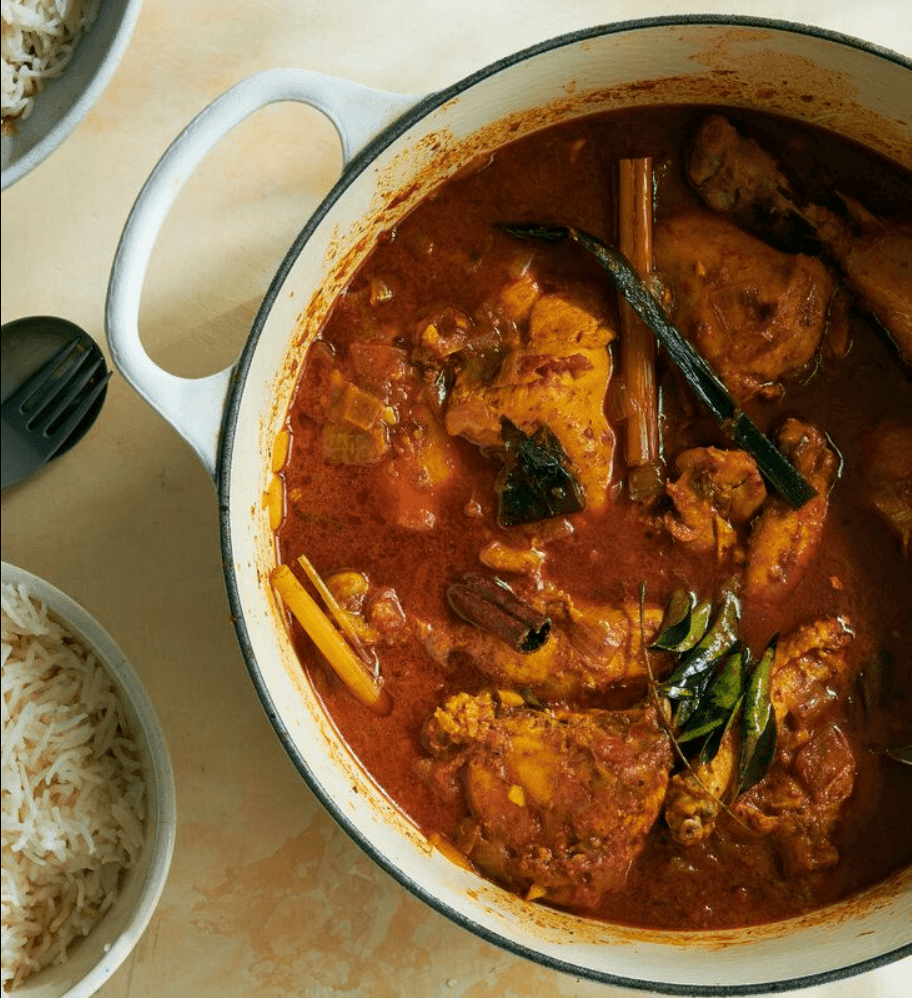
Kukul Mas Curry Chicken Curry
Kukul Mas Curry, or Sri Lankan Chicken Curry, is an aromatic curry made from tender chicken pieces cooked in a rich coconut milk-based sauce. The spices—cinnamon, cloves, curry leaves—imbue the curry with a deep flavour that’s both comforting and warming. It’s typically served with rice, roti, or string hoppers, making it a popular choice for a hearty meal. This dish is a perfect example of how Sri Lankan cuisine incorporates the use of coconut milk in its curries, a practice that has been passed down through generations in Sri Lankan culinary history.
Lamprais
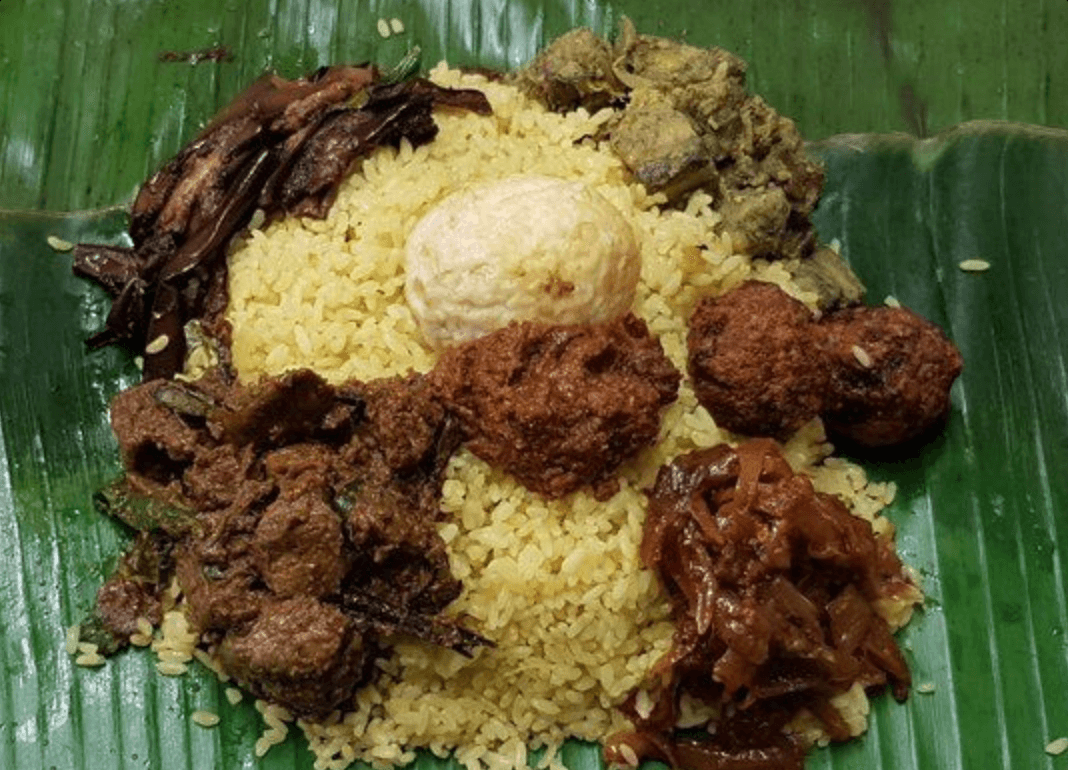
Lamprais
Lamprais is a Dutch-influenced Sri Lankan dish that’s a combination of rice, meat curry, blachan (a spicy sambol), and plantains, all wrapped in a banana leaf and baked. The rice is cooked in meat stock, and the aroma from the banana leaf elevates the dish to a whole new level. This dish is a representation of how Sri Lankan cuisine history has been shaped by foreign influences, particularly from the Dutch during colonial times. The combination of meat, spices, and rice wrapped in banana leaves is a flavour-packed experience that captures the essence of Sri Lankan culinary culture.
Kottu (Kottu Roti)
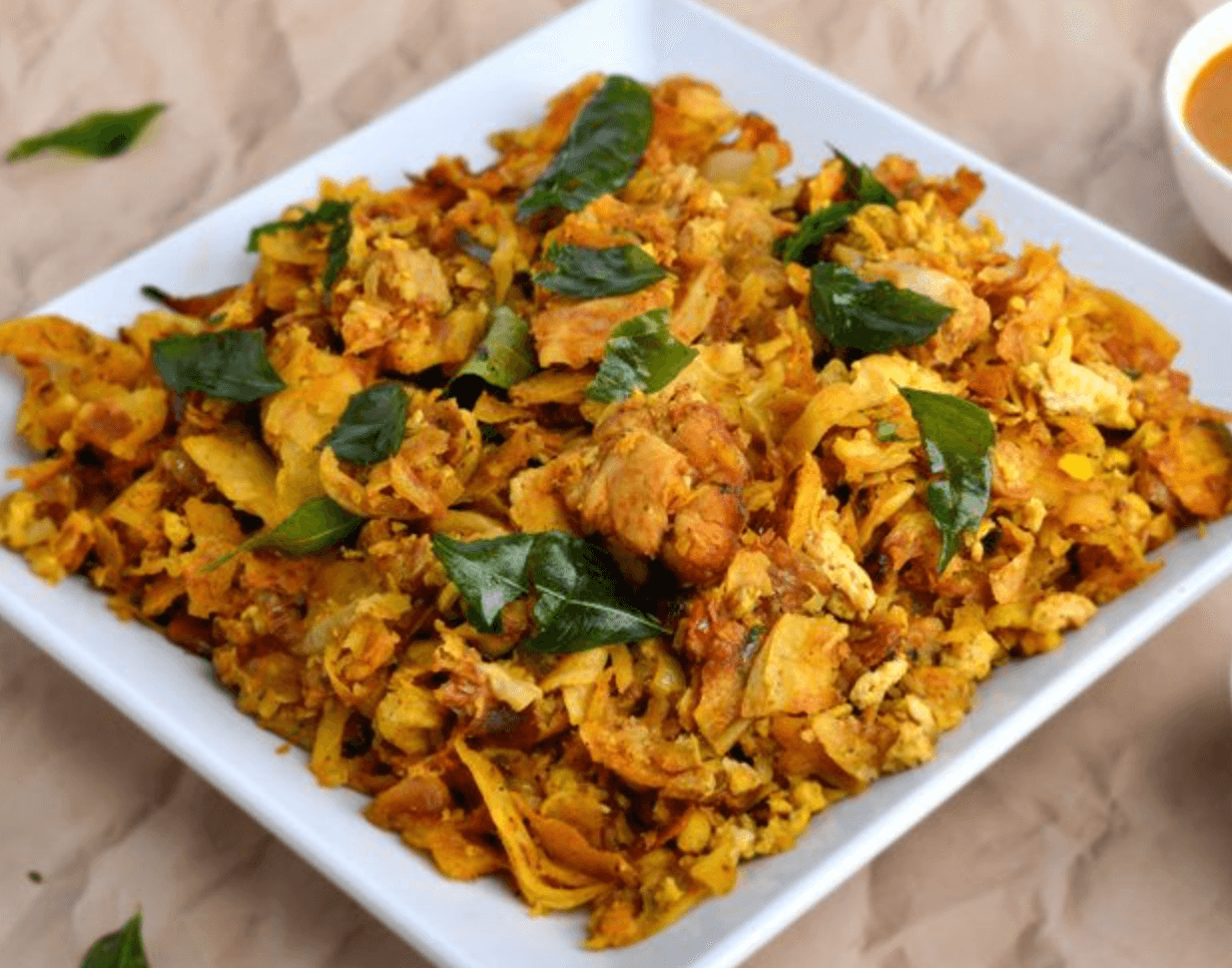
Kottu Kottu Roti
Kottu Roti is a popular street food in Sri Lanka. It is made by stirring-frying shredded roti with a combination of vegetables, eggs, and meat or seafood. It’s then seasoned with aromatic spices and served with curry or chutney on the side. The sound of the knife chopping the ingredients on the hot griddle is a signature part of the Kottu-making process. Kottu Roti reflects the fast-paced, vibrant culture of Sri Lanka, and it’s often enjoyed as a late-night snack or a hearty meal. You can add some chili sauce for extra heat, depending on your spice tolerance.
Coconut Roti
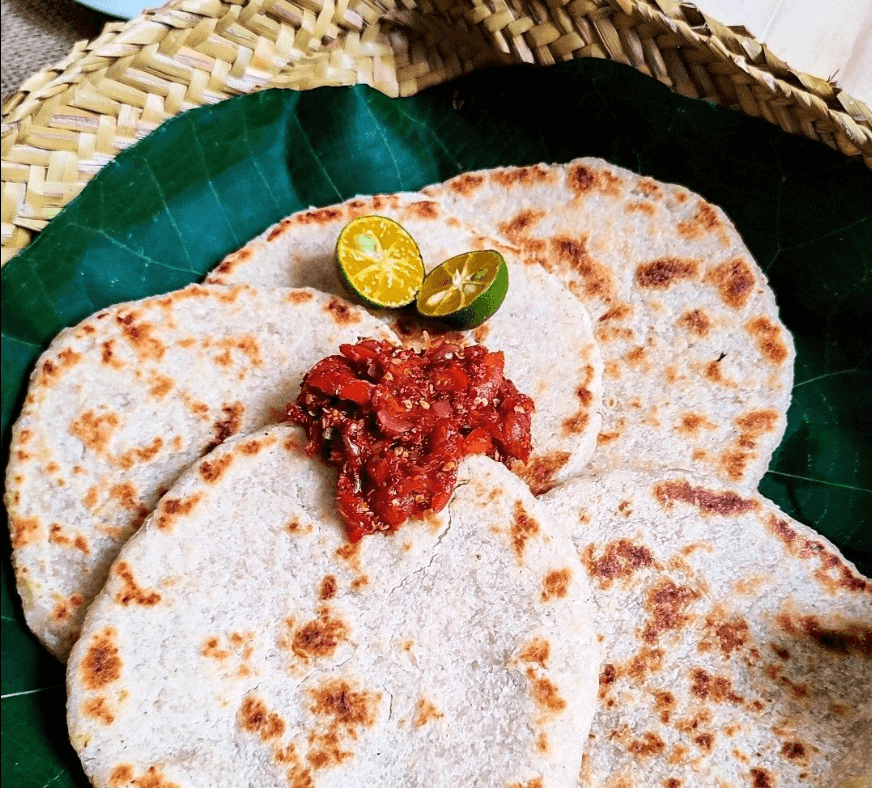
Coconut Roti
Coconut Roti is a flatbread made from flour, grated coconut, and a pinch of salt. It’s cooked on a hot griddle until crispy and golden brown. This simple yet delicious roti has a subtle sweetness from the coconut, making it a perfect pairing with curries or sambols. Coconut Roti is a staple in Sri Lankan homes, often served with meals like milk rice (Kiri Bath) or Parippu (Dhal Curry). This dish, like many others, showcases Sri Lankan cuisine’s reliance on coconut, which is an integral part of its food culture and history.
What Are the Best Sri Lankan Desserts to Try?
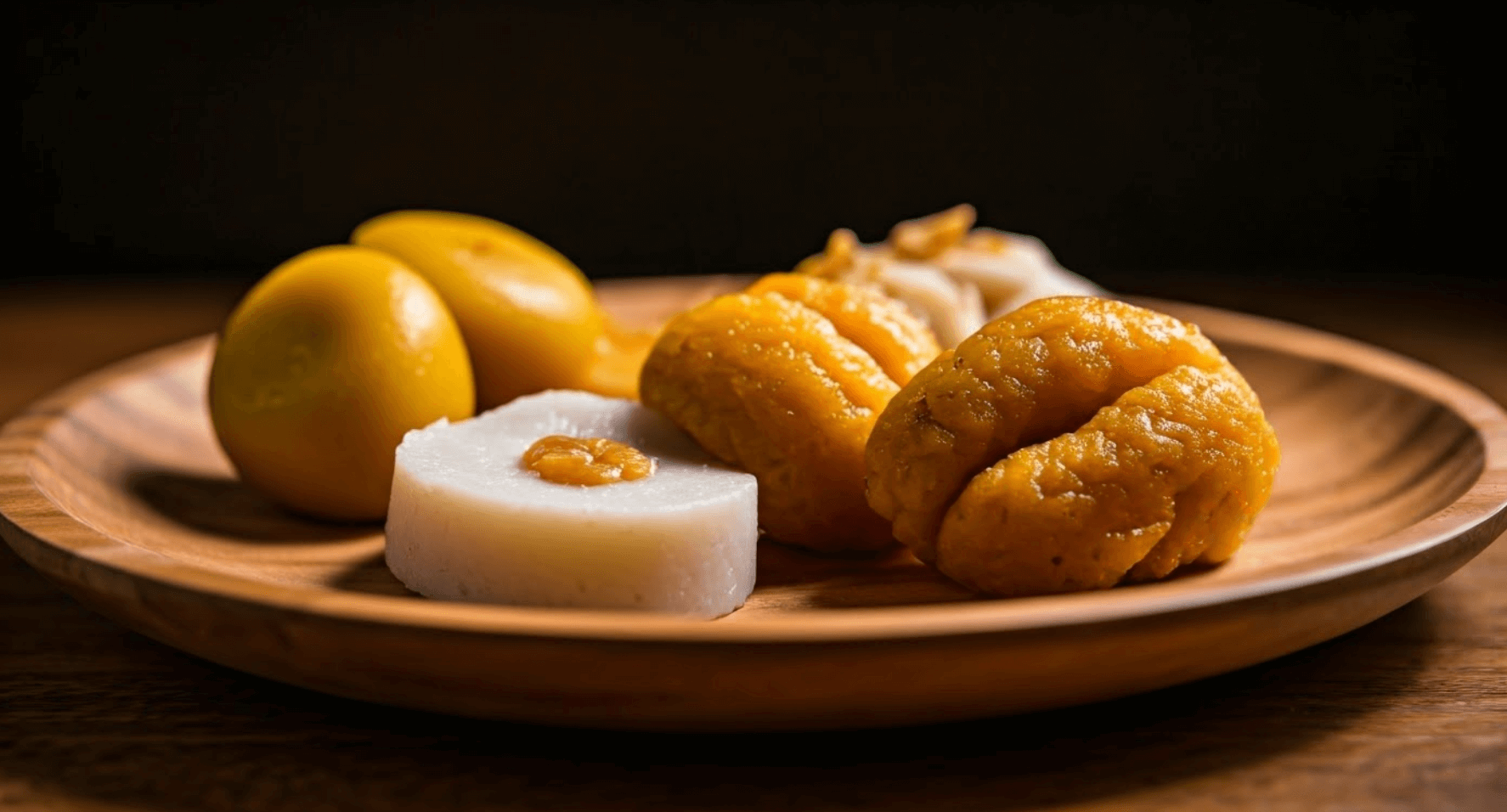
A variety of Sri Lankan desserts
Sri Lankan desserts are not just delicious sweets; they are an integral part of the island’s rich culture and history. These desserts are made with local ingredients and traditional recipes passed down through generations. Influenced by Sri Lanka’s Dutch and Portuguese heritage, the island offers a range of mouth-watering sweets. Some of the most famous ones include Asmi, a creamy milk and cinnamon treat, Kiribath with Lunu Miris, a coconut rice dish with a spicy sambal, and the unique tropical flavour of Wood Apple. Here are some of the best Sri Lankan desserts you must try, along with a few more classic favourites.
Asmi
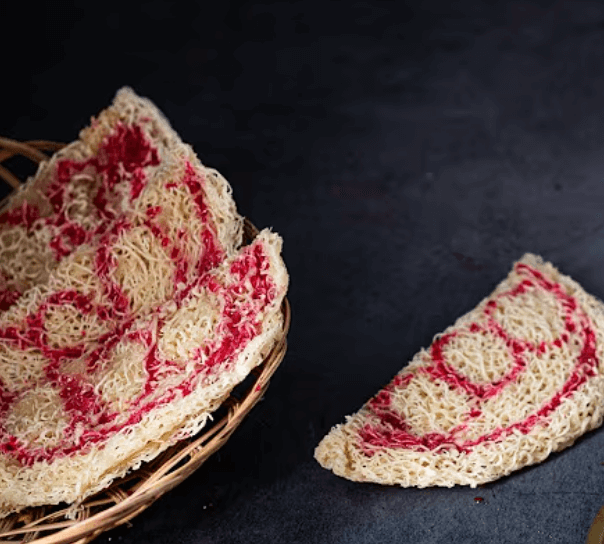
asmi
Asmi is a traditional Sri Lankan dessert made with milk and cinnamon. The milk is simmered slowly until it thickens and becomes creamy, and then cinnamon is added for a warm, aromatic flavour. This dessert is often prepared during special festivals or religious occasions. The simplicity of the ingredients, combined with the richness of the milk and spice, makes Asmi the perfect comfort food and a must-try for anyone exploring Sri Lankan cuisine.
Kiribath with Lunu Miris
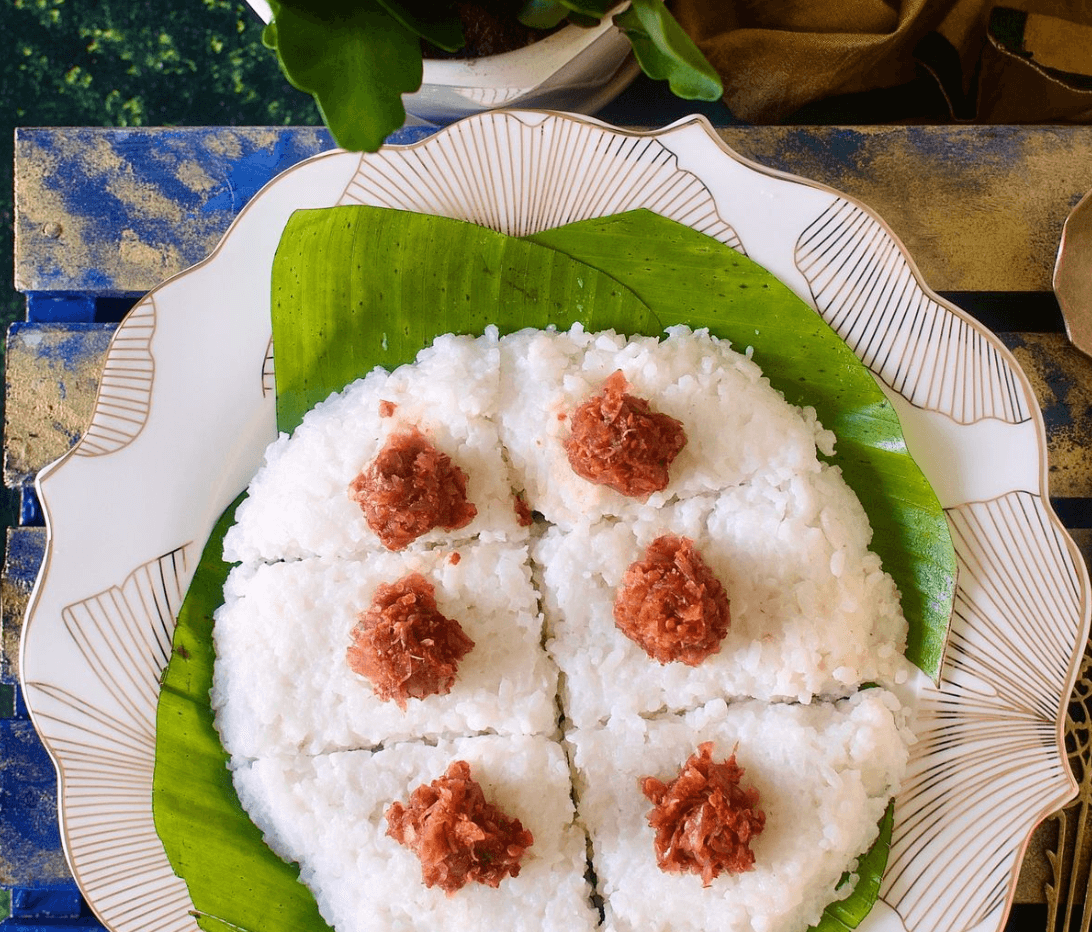
Kiribath with Lunu Miris
Kiribath, or milk rice, is a popular dish in Sri Lanka. It is made by cooking rice in coconut milk. The result is a creamy, smooth rice that pairs perfectly with Lunu Miris, a spicy sambal made from red onions, chili, Maldive fish, and lemon juice. The combination of the mild, creamy rice with the fiery, tangy sambal is a classic and is often served on festive occasions or special family gatherings. It’s a delightful blend of flavours that defines Sri Lankan food.
Wood Apple (Divul)
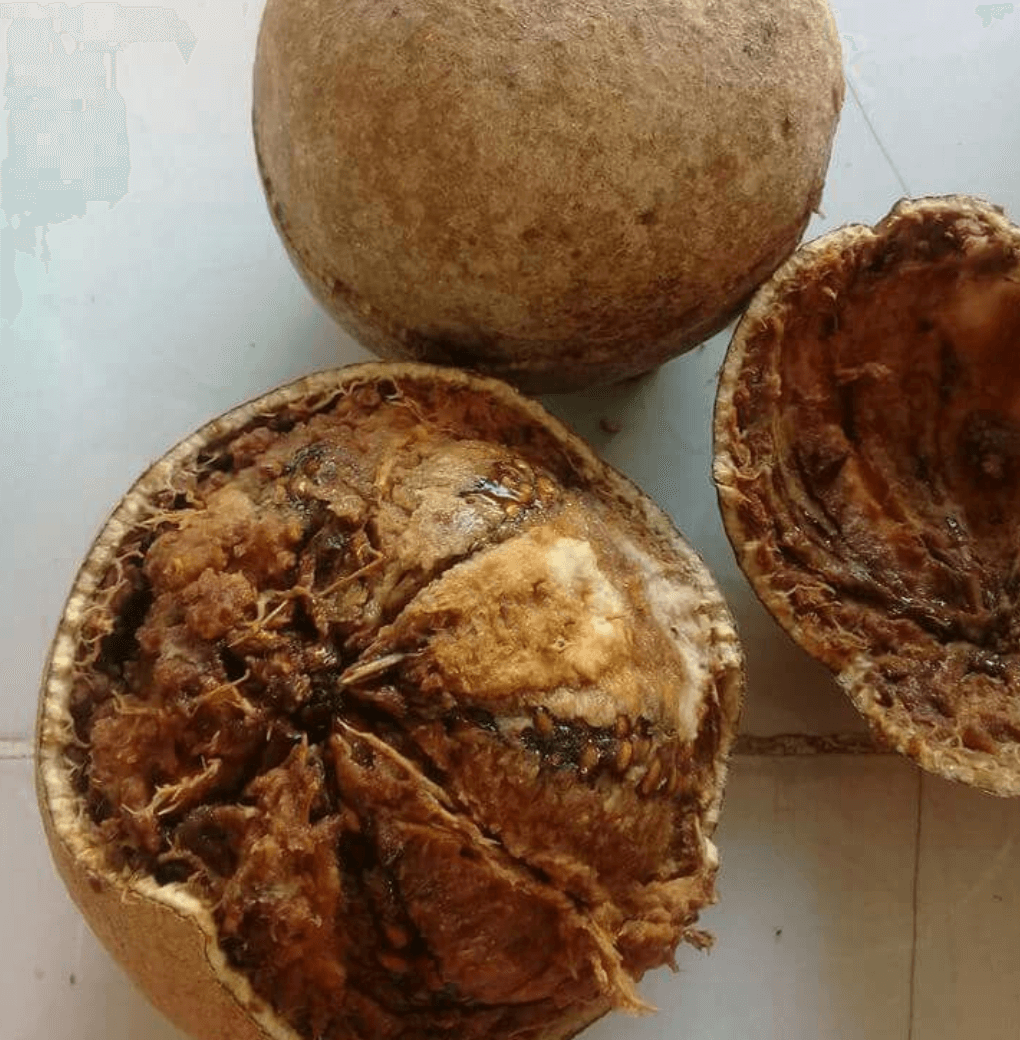
Wood Apple (Divul)
Wood Apple, known as divul in Sinhala, is a tropical fruit with a tangy-sweet flavour. It’s commonly used in Sri Lankan cooking, where the pulp is mixed with sugar or jaggery to make a sweet jam or preserve. Wood apple juice is also a popular drink, especially in hot weather, due to its refreshing qualities. The fruit is rich in vitamins and antioxidants, making it not only a delicious but also a healthy treat. It’s a perfect representation of Sri Lanka’s tropical bounty.
Watalappan
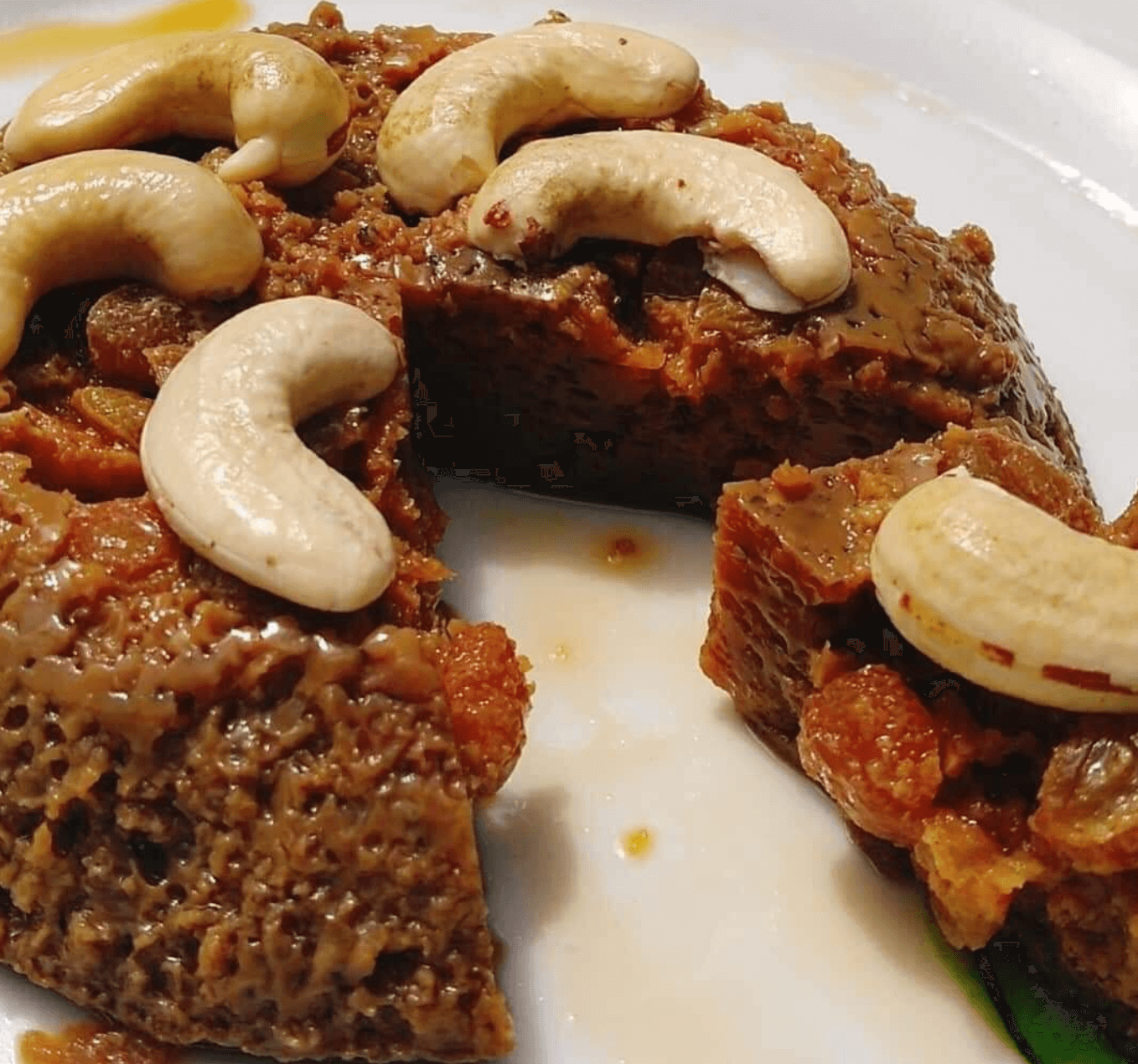
Watalappan
Watalappan is a rich Sri Lankan dessert made with jaggery, coconut milk, and aromatic spices like cardamom and cloves. It’s similar to a caramel custard but has the added richness of coconut and the warmth of spices. The dessert is steamed and served chilled, making it an ideal treat for festive occasions or celebrations. Watalappan is a popular favourite due to its creamy texture and sweet, spiced flavour.
Kavum
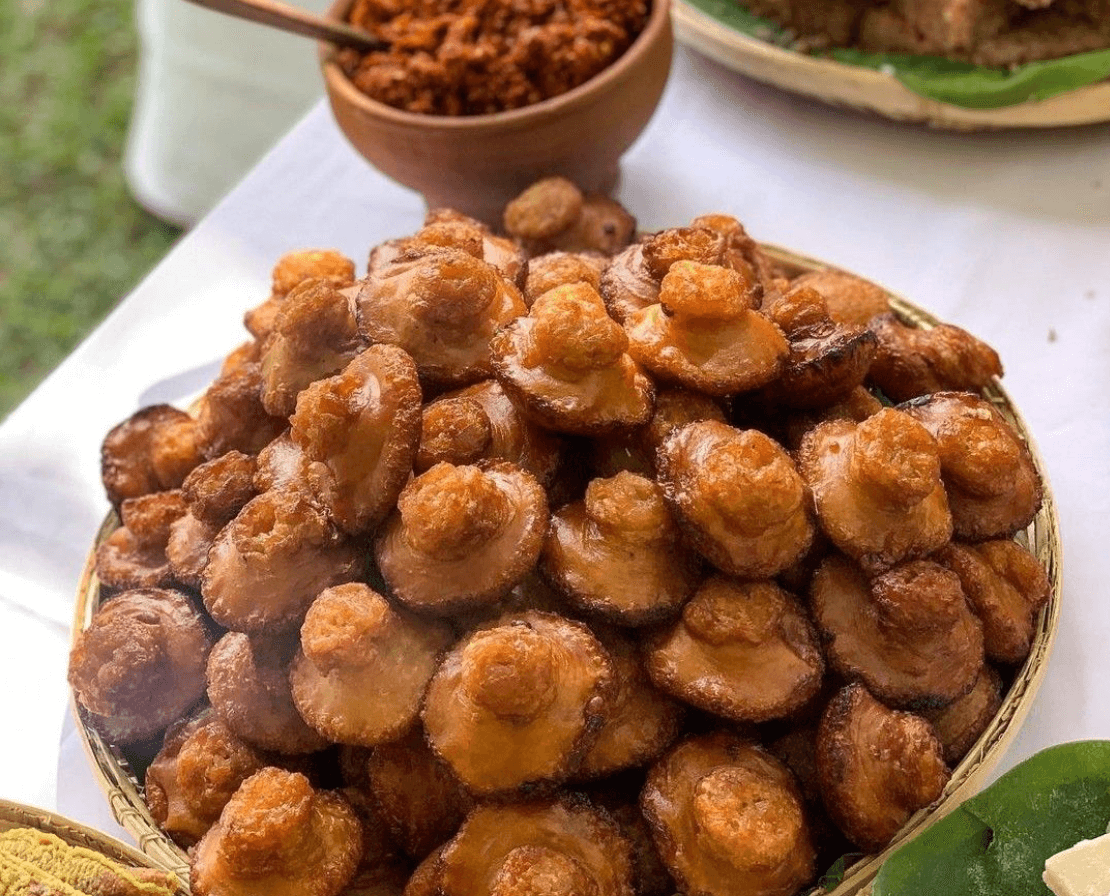
Kavum
Kavum is a traditional Sri Lankan sweet made from rice flour, jaggery, and coconut milk. This mixture is deep-fried to create crispy doughnuts. Kavum is often made during religious festivals and is a popular snack in Sri Lankan households. The sweetness of the jaggery and the crunchy texture make Kavum a nostalgic dessert for many. It’s a perfect combination of flavours and textures, loved by people of all ages.
Sri Lankan desserts are a wonderful blend of sweetness, spices, and tropical ingredients. Whether it’s a special occasion or you’re simply craving something sweet, these treats will give you a taste of the island’s rich culinary heritage!
Final Thoughts
As we conclude our journey through Sri Lankan cuisine, it’s clear that the island is a paradise for food lovers. The rich blend of spices in aromatic curries and the tangy sambols offer a perfect snapshot of Sri Lanka’s diverse culture. The key to its exceptional taste lies in the careful balance of fresh, local ingredients, herbs, and spices.
From fiery curries to mild coconut-based dishes, there’s something for everyone, including some western food options. Despite the rise of fast food, traditional Sri Lankan dishes remain at the heart of the island’s culture, cherished by both locals and visitors alike.
Frequently Asked Questions
How does Sri Lankan food differ from Indian cuisine?
While both cuisines share similarities due to their geographical proximity and historical influences, Sri Lankan food stands out for its heavier use of coconut and seafood, thanks to the island’s coastal geography. Sri Lankan dishes also tend to be spicier, with more heat in the flavours compared to typical Indian food.
What are the key ingredients in Sri Lankan dishes?
Rice, coconut, and seafood are staples in Sri Lankan cuisine. Spices such as turmeric, cinnamon, fenugreek, mustard seeds, and curry leaves, along with ingredients like red lentils and jackfruit, are commonly used. These ingredients bring rich, authentic flavours to the dishes that define Sri Lankan food.
What are some traditional cooking methods used in Sri Lankan cuisine?
Sri Lankan cooking involves methods like steaming (for dishes like string hoppers and kiribath), boiling (as seen in dhal curry and jackfruit curry), and frying (used for dishes like kottu and wambatu moju). A typical technique involves tempering spices in hot oil before adding them to the main ingredients to bring out the full flavour.
Are there any popular Sri Lankan dishes that are suitable for vegetarians or vegans?
Yes, Sri Lankan cuisine offers a variety of vegetarian and vegan options. Dishes like Gotu Kola Mallum Sambola (a leafy vegetables green salad), Parippu (Dhal Curry), and Pol Sambol (coconut relish) are vegetarian-friendly. Many meat-based dishes can also be easily adapted to suit vegetarian preferences.
Are there any regional variations in Sri Lankan cooking styles?
Yes, there are distinct regional variations. Coastal areas feature a wider variety of seafood, while the hill-country regions focus on fresh vegetables and local fruits. The cuisine in the northern Jaffna region tends to be spicier, influenced by Indian flavours, while southern Sri Lankan curries are generally milder.


